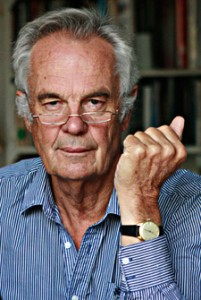The rich get richer. So do the poor
By Jonathan Power
December 6th 2016
President-elect Donald Trump is about to make the American rich even richer with his plan to cut their taxes. A cause for shame. Nevertheless, the history of America is that poorer people have done better than is commonly thought over the last two centuries.
Today they have indoor plumbing, heating, electricity, smallpox and tuberculosis-free lives, adequate nutrition, much lower child and maternal mortality, doubled life expectancy, increasingly sophisticated medical attention, the availability of contraception, secondary level schooling for their children and a shot at university, buses, trains and bicycles, much less racial prejudice, longer retirement, a rising quality of the goods they buy, better working conditions and the vote.
Once these were luxuries that only the richer could experience. It has been shown by many studies that happiness increases fast as poorer people get better off but that beyond a certain point – an income of $15,000 per person per year- extra happiness increases very slowly.
Today most of the poorest should expect to be happier than their forefathers, even if they have a long way to go.
For Europe, Canada and Japan it is the same.
In recent years this is the experience of most of Latin America although 20% still live in real poverty. In the Middle East (including Iraq and Syria before their wars). In China, India, Pakistan, Sri Lanka, South East Asia and North Africa there has been good progress.
In Africa, less so, but a number of countries are getting there- South Africa, Nigeria, Ivory Coast, Ghana, Senegal, Rwanda, Gabon, Ethiopia, Tanzania, Uganda and Kenya.
The author of “Bourgeois Equality”, Deirdre McCloskey, has called this “The Great Enrichment”.
The very poorest, living on incomes of less than $2 a day, have experienced some of this but not that much, but they are a fast decreasing breed. Over the 20 years from 1993 the number of very poor people fell by over 1 billion. Between 1990 and 2010 the percentage of children who died before their fifth birthday dropped by almost one half. The biggest declines were in India and China during the time of Prime Minister Manmohan Singh and President Hu Jintao.
According to The Economist the average person among the very poorest lives on $1.33 a day. It would take only $.0.57 per person to abolish extreme poverty. This would cost only $78 billion a year, less than 0.1% of Global GDP.
Despite popular belief, the world has become a more equal place since the global financial crisis that began eight years ago. The growth of Brazil, India and China has led to the biggest decrease in inequality since the Industrial Revolution began in Britain.
There is also the factor of the effect of war.
In human history there have never been so few wars as since the end of the Cold War.
The poor have always been the ones most threatened by war. According to Stephen Pinker’s magisterial study of 2001, “The Better Angels of Our Nature”, the worldwide rate of death from war has fallen from 300 per 100,000 people during World War 2 to single digits in the 1970s and 80s to less than 1 in this century.
Sixty per cent of the world is now democratic (in 1940 you could count the number on both hands). The democracies almost never go to war with each other.
UN peacekeeping operations have exploded in number, bringing much success.
Under President Obama, as Syria has shown, the US, the world’s superpower, is becoming skittish about getting into wars and the tendency is when in to pull out.
Murder and crime rates have fallen precipitously.
Poor people are the ones disproportionately hurt by crime. The European murder rate has fallen 35 fold since the Middle Ages. Though homicide rates climbed back up from their historic lows between the 1970s and 80s, reversing the progress made since the late 19th century, they collapsed in the 21st century in 75 countries.
Violent crime has dropped particularly sharply in the developed world. This is not because of increased incarceration. Police tactics have markedly improved. DNA testing has enabled criminals to be tracked down more easily.
Abortion is more widely available and thus the number of children born to drug addicts, drunks and single mothers who cannot cope, and thus are more likely to turn to crime, has shrunk significantly.
Not least is the abolition of lead in petrol (gasoline) in 175 countries. Lead exposure damages people’s brains. The parts of the brain damaged by lead are the same ones that check people’s aggressive impulses. Crime shot up in the mid to late 20th century as cars and lorries spread around the world.
Where do we go from here? Surely, I hope, only upward.
Copyright: Jonathan Power
